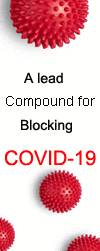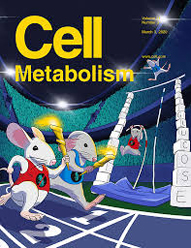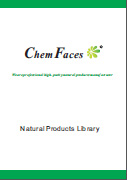| Description: |
9-Oxo-10,11-dehydroageraphorone has acaricidal activity. It induces hepatotoxicity and cholestasis in rats. 9-Oxo-10,11-dehydroageraphorone also effectively inhibits the proliferation of HeLa cells by arresting the cell cycle transition from S to G2/M phase.
|
| Targets: |
Caspase | Antifection |
| In vitro: |
| Exp Parasitol. 2014 May;140:8-11. | | Acaricidal activity of 9-oxo-10,11-dehydroageraphorone extracted from Eupatorium adenophorum in vitro.[Pubmed: 24631419] | The acaricidal activity of the 9-Oxo-10,11-dehydroageraphorone (euptox A), a cadenine sesquiterpene from Eupatorium adenophorum (E. adenophorum) against Sarcoptes scabiei and Psoroptes cuniculi was tested in vitro.
METHODS AND RESULTS:
A complementary log-log (CLL) model was used to analyze the data of the toxicity tests in vitro. The results showed euptox A had strong toxicity against mites, killing all S. scabiei at 3 and 4 mg/ml (m/v) concentration, while 4 mg/ml 9-Oxo-10,11-dehydroageraphorone was also found to kill all P. cuniculi within a 4 h period. Similarly, 2, 3 and 4 mg/ml concentration of 9-Oxo-10,11-dehydroageraphorone had strong toxicity against S. scabiei, with median lethal time (LT50) values at 0.687, 0.526, 0.326 h, respectively. 3 mg/ml and 4 mg/ml showed strong acaricidal action against P. cuniculi; the LT50 values were 0.693 and 0.493 h, respectively. The median lethal concentration (LC50) values were 1.068 mg/ml for Scabies mite and 0.902 mg/ml for P. cuniculi in 2 h.
CONCLUSIONS:
The results indicate that 9-Oxo-10,11-dehydroageraphorone has strong acaricidal activity and may exploit as novel drugs for the effective control of animal acariasis. |
|
| In vivo: |
| J Biochem Mol Toxicol. 2001;15(5):279-86. | | Hepatotoxicity and cholestasis in rats induced by the sesquiterpene, 9-oxo-10,11-dehydroageraphorone, isolated from Eupatorium adenophorum.[Pubmed: 11835625] |
METHODS AND RESULTS:
Eupatorium adenophorum leaves cause hepatotoxicity and cholestasis in rats. The hepatotoxicant has been characterized as 9-Oxo-10,11-dehydroageraphorone (ODA), a cadinene sesquiterpene. Oral administration of 9-Oxo-10,11-dehydroageraphorone, mixed in feed to rats, caused jaundice in 24 h. The histopathological lesions in liver and biochemical profile of marker enzymes show that 9-Oxo-10,11-dehydroageraphorone induced hepatotoxicity and cholestasis in rats.
CONCLUSIONS:
This is the first report on the toxicity of a cadinene sesquiterpene in rats. |
|

 Cell. 2018 Jan 11;172(1-2):249-261.e12. doi: 10.1016/j.cell.2017.12.019.IF=36.216(2019)
Cell. 2018 Jan 11;172(1-2):249-261.e12. doi: 10.1016/j.cell.2017.12.019.IF=36.216(2019) Cell Metab. 2020 Mar 3;31(3):534-548.e5. doi: 10.1016/j.cmet.2020.01.002.IF=22.415(2019)
Cell Metab. 2020 Mar 3;31(3):534-548.e5. doi: 10.1016/j.cmet.2020.01.002.IF=22.415(2019) Mol Cell. 2017 Nov 16;68(4):673-685.e6. doi: 10.1016/j.molcel.2017.10.022.IF=14.548(2019)
Mol Cell. 2017 Nov 16;68(4):673-685.e6. doi: 10.1016/j.molcel.2017.10.022.IF=14.548(2019)

